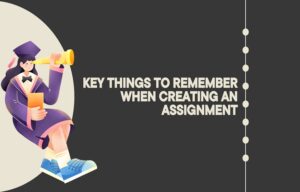Fostering collaboration between clinical social workers and educators

Teaching and social work are both considered honorable and rewarding professions. In the United States, the government strives to provide teachers and clinical social workers in every school district. Both professionals consequently need to work together to help the children and young people they are tasked with supporting.
According to a report by ThinkImpact, there are 3.8 million teachers in America today, and that number is expected to grow to just over 3.9 million by 2029. Most of these serve in public schools, with just a small percentage working in private institutions. The number of social workers serving schools is a little smaller, with one social worker serving an average of 250 students. These professionals provide an important service in schools, and it is essential to understand their role, as well as how they collaborate with educators to produce well-rounded students who turn into independent, well-balanced and productive adults.
The best clinical social work courses teach the value of collaboration between social workers and educators. By the time enrollees graduate, they are equipped with the necessary knowledge to work not just with students but with teachers as well, to help every learner.
The online MSW in North Carolina with FSU, for example, is a course that covers topics like human behavior, mental health, child welfare and clinical social work practice. In the child welfare module, students delve into school social work and learn the value of collaboration between clinical social workers and educators. All the coursework for the Florida State University Master in Social Work program is online, but there are field placements to ensure that students can experience social work in real-time, with learners under the supervision of others who are more experienced in the profession.
For anyone who plans to undertake a master’s in social work, it helps to become familiar with the issues. Even before starting a course, you can understand the role of the social worker within schools and how they can collaborate with educators to help young students and teenagers achieve their potential.
Role of the clinical social worker in the school setting
To understand how these professionals collaborate with educators, it is important to first define their responsibilities within schools. What is the mandate of the school social worker in an American school?
They serve the student body
The primary role of the school social worker is to help learners deal with a variety of issues. These vary, and school social workers in different schools may find themselves helping students with completely different problems. However, some problems seem to be universal, and they include dealing with anxiety, bullying, grief, anger, truancy and family crises.
The clinical social worker meets the student and conducts a biopsychosocial assessment to determine their physical, mental and emotional condition. Once these have been outlined, the social worker develops a plan to help the student cope, enhance their social interactions, and deal with whatever emotional and mental issues they may be facing.
The school social worker may also help alleviate physical problems, like a lack of adequate housing or a poor family situation. After a thorough assessment, they can make recommendations like removing the child from the home or getting the family together to discuss how the home situation can be improved.
They work with teachers and school administrators
Social workers are a rich resource for teachers and administrators alike because they have a unique insight into the student body. They are an important part of the special education program, and they contribute their knowledge and experience to helping teachers develop appropriate curriculums and teaching methodologies for students who need special education.
They can also be involved in developing special programs that target specific student attributes, like the very bright, highly active or slower learners. School social workers also help teachers and administrators better understand student behavior so they can adjust their teaching methods accordingly. The school social worker is in constant communication with teachers, sharing reports, observations, and any other information they think is useful to help teachers so they can help students.
Besides working with students and teachers, the school social worker plays a role in making sure that school administrators are aware of the issues that students may be facing and are well-equipped to deal with them. They provide input into various programs that are designed by administrators to help learners, and they also help with access to resources that are vital for a student’s mental and emotional health.
The other important role of these professionals is training. In many schools in America, social workers regularly train faculty members on various topics. These include understanding and dealing with common mental health problems in young learners, how to help students learn and retain information better, and how to help young people grow up into happy, self-confident and productive adults. School administrators are free to consult social workers any time they need their input, and they often invite them to contribute to the discussion of issues where they feel their opinions, knowledge and experience may be of value.
They work with parents, guardians and families
It is the role of the school social worker to advocate for the families of their students. They help families understand their child’s behavior and how the conditions at home could potentially affect their learning and social adjustment. Where necessary, these professionals also conduct biopsychosocial assessments of families to determine their social and psychological needs and come up with plans to help them so they can provide an appropriate home life for learners.
Social workers also help families access important resources that go directly into helping learners.
They work with the school district
There are many ways that clinical social workers collaborate with the school district. They let them know – through detailed reports – the state of their schools and their students. They also contribute to policymaking and provide important insights that districts use in the distribution of resources.
This could include providing the school board with statistics on how many students need alternative housing, how many face learning disabilities, as well as other important issues that may affect a young person’s ability to learn.
They collaborate with the community
The community plays an important role in supporting students, and the school social worker is a bridge between the two. They apprise community leaders of any issues that students may be facing that are connected to their communities, and they also get feedback on how they can work together to help learners.
The benefits of social worker-educator collaboration
As already outlined, teachers and school social workers need to work together to determine how best to help students with the various challenges they encounter. There are several reasons why every school social worker should foster close links with educators.
It enhances the effectiveness of the services they provide
When teachers and school social workers cooperate, they learn about what each other does, the challenges they face, and how to go about solving them. If, for example, a school social worker isn’t able to get through to a student, they can consult the teachers who have been with the learner for a longer time to learn what challenges are holding them back.
Similarly, if a teacher tries various interventions with a certain student and doesn’t notice any progress, the school social worker can provide important perspectives the teacher can use to develop new approaches.
They gain access to different perspectives
Teaching and social work are completely different professions, and although they may overlap in the school system, they require different types of training and experience. By cooperating, teachers and social workers learn more about each other’s roles, and the knowledge they glean is valuable in helping learners. A teacher, for example, might be excellent at instruction but may not know what to do when students exhibit certain behaviors. The social worker can teach them how to handle different behaviors in children of different ages. With this knowledge, teachers are better prepared to help students with whatever difficulties they may be facing.
It helps reduce duplication
When teachers and school social workers are on the same page, it eliminates duplication of tasks and saves resources. If a teacher has covered a certain area, for example, there is no need for the social worker to do the same. Their time is better spent coming up with new ways to help students with the challenges they face.
There are fewer gaps in service delivery
When professionals from different fields don’t cooperate, things often fall through the cracks. It isn’t any different with teachers and school social workers. When they don’t work together, service delivery gaps may arise. They may, for example, neglect certain students who need help because each assumes the other has provided the necessary assistance. It is, therefore, important for these two professionals to work together to make sure that every student who needs their help receives it.
It improves advocacy
Both teachers and social workers are advocates. They push the causes of their students, parents and communities. When they work together, they can be a powerful force for improving advocacy for those they are charged with supporting.
The teacher works directly with the school education district to make them aware of the problems that students, parents and the community are facing in terms of education. At the same time, the clinical social worker does their bit, letting their respective departments know what resources are needed to improve the well-being of students, parents and the community at large. When the two deliver services, they have more resources and can do a much better job.
It helps foster professional development and learning
Social workers are vital in educating teachers about the aspects of social work that touch on their work. They organize training sessions for educators, where they can teach them about the different challenges they are likely to encounter as they work with children and young adults, as well as the best ways to address them.
Sharing feedback helps both types of professionals
Feedback is a great way to improve service delivery. When both teachers and social workers talk to each other about their respective roles and how they are getting on with different students, they can both design better strategies to help learners. Sharing feedback also allows both types of professionals to talk about their challenges and discuss how they can use the resources at their disposal more effectively.
What are the barriers to collaboration?
In an ideal world, social workers and educators would collaborate and deliver the best services to students, faculty and the community. However, it sometimes doesn’t happen, and there are several reasons for it:
- Conflicting interests
- Lack of clarity about roles
- Communication breakdowns
- Cultural differences
- Power politics
- Resource constraints
- Personal and interpersonal factors
How to improve collaboration
It is in the interest of all that teachers and social workers collaborate. When they work together, it results in better outcomes for students and communities. Collaboration isn’t static; it changes depending on circumstances. It is consequently important for teachers and social workers to know how they can improve collaboration.
By communicating regularly and sharing information. When they talk, teachers and social workers keep each other abreast of what is happening in their different roles. The teacher lets the social worker know about students who are experiencing challenges, and the social worker lets the teacher know how various students are progressing through counseling. When they communicate in this way, nothing falls through the cracks, and all learners who need assistance can get it.
By developing a collaborative framework and reviewing it at least once a year to make sure it meets students’ needs. A framework means that no one has to guess what course of action they have to take since it is all written down. They have a step-by-step guide they can follow to help learners achieve their potential. If they come across a challenge that is not covered in the framework, they can consult other, more experienced professionals.
By building and maintaining strong relationships. This goes a long way in improving collaboration between teachers and school social workers. Everyone should have a professional approach, and where there are differences of opinion, they should be handled according to procedure.
By acknowledging each other’s contributions. If the school social worker comes up with a brilliant idea to help students, the faculty should acknowledge it and help put it into practice. Likewise, when teachers make a useful contribution, social workers should let them know they appreciate it and are prepared to use it.
By sharing feedback. As people share their thoughts, they communicate and share ideas in the process, and this makes for better working relationships. Feedback also helps both parties know what they are doing right and when things aren’t working. Feedback should never be viewed as a criticism but rather as an exchange of information that is used to help learners.
Getting learners in the same room with the school social workers and teachers can provide useful insights that can aid in collaboration. By both professionals observing students at the same time, they may notice things that they may otherwise not, and students may open up in ways they don’t with either professional.
By attending seminars and workshops to learn about how to collaborate more effectively. These are industry-specific events that are useful in imparting the latest techniques to help learners, build communication skills and improve the quality of services offered to students.
How often should schoolteachers and social workers meet?
This is a common question for those who are just starting out in either profession. There is no hard and fast rule for how often teachers and social workers should meet. It should be dictated by their workload and how much guidance and assistance their students need.
In busy schools, they may need to meet once or even twice a week to update each other. However, in many schools, they meet once or twice a month, and it is enough to keep them up-to-date on what is happening with their charges.
They may sometimes find they need to meet more often because they are handling a challenging case. The important thing is that teachers and social workers communicate regularly and that both of them have all the information they need to serve their learners.
Collaboration is key
Collaboration is vital between school social workers and educators, and the results are evident. In schools where these professionals work closely together, students have the support they need, and it reflects in their results. Clinical social workers who choose to specialize in schools should be prepared to work together with educators for the benefit of the children they are tasked with helping.





